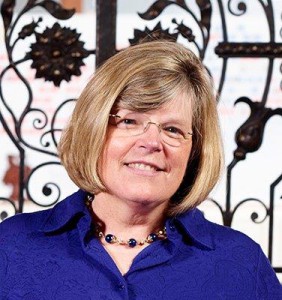 In a recent blog post on preparing a project for publication, Scott Steward targeted that essential shift in thinking that must occur as you translate your research project into a writing project. And he pointed out how important it is to write a table of contents . . . and a title.
In a recent blog post on preparing a project for publication, Scott Steward targeted that essential shift in thinking that must occur as you translate your research project into a writing project. And he pointed out how important it is to write a table of contents . . . and a title.
After talking at length with attendees at our Writing and Publishing Seminar about their projects, I realized that TOCs and titles figured large in those conversations. So here are three more thoughts on the topic:
- Your table of contents might be very simple. If you’re writing a multigenerational treatment in Register style, Chapter 1 might be Generation 1, Chapter 2 might be Generation 2, and so on. But such a list still tells you something, and the number of chapters (and generations) tells you something else: that you’re beginning at a certain place and telling the story for a certain number of generations. If nothing else, your TOC will serve as a checklist as you record each generation.
- If you are incorporating information about allied families, or family stories, or narrative context, or transcriptions of wills, try composing a detailed table of contents: not just chapter titles but subheads as well. Then look at the story that your TOC tells. Is the balance right? Are all the elements central to your family history, or might some — say, transcriptions — fit better in an appendix?
I just relearned that lesson yet again. I had pored over the contents of a project many times, but only after I decided to make a detailed TOC did I see that the chapters lacked parallel structure. And now all chapters are nicely parallel.
- Composing a TOC is indeed an essential part of the writing process, but so is composing a working title—which essentially establishes your scope. Consider the following:
The Descendants of Judge John Lowell of Newburyport, Massachusetts
Ancestors and Descendants of George Rufus Brown and Alice Nelson Pratt
Some Descendants of Roger Billings of Dorchester, Massachusetts
Each title states exactly what each book is about: all descendants of Judge John Lowell; an attempt to trace all ancestors of a certain couple, then their descendants; some descendants of Roger Billings. That final title is one of the most instructive, because it shows that you have the power to limit your scope. The important ancestor is Roger Billings, but it’s OK to trace only some of his descendants. It is still a valid and authoritative family history.
Besides a TOC I also write a forward that sets the stage giving some background information on what the monograph is about and why it was produced.
I also like to include a page describing abbreviations like m. for married and d. for died etc., and more importantly a glossary of definitions which in themselves give curious readers an idea of what level of detail you are writing. Of course a bibliography is essential as well. It seems like we genealogists go through a lot of information when we do our research and sometimes ascribing the vital record information to the individual requires terminology that non-genealogists are not familiar with.
So a glossary that reveals the terminology serves like the setting to a story. For example if you include the term “consumption” in a phrase like John Doe d. from consumption it might be that the reader has no idea what consumption is and might be amazed to understand that it was what now is referred to as tuberculosis. Many examples can be made but the point is that the choices of terms you put in a glossary can be useful in setting the tone and scope to your own book.
Hi Penny, just read your article in American Ancestors too. I’m remembering something I’ve often mentioned. Years ago, Alicia Crane Williams said, “As soon as you get a little information, put it in Register style.” In other words, don’t wait until you have a big pile of data. Just start writing. It helps you think.
Thanks Helen, you were one of the few, I think, that listened!